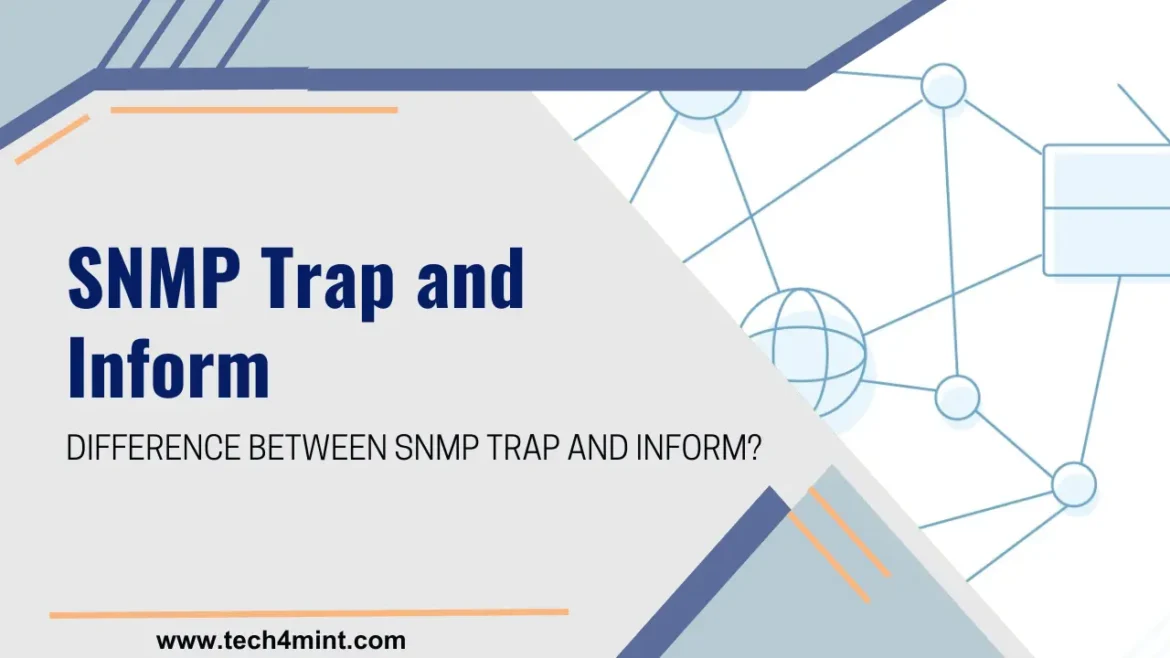In the world of network monitoring and management, SNMP (Simple Network Management Protocol) plays a crucial role. SNMP agents, which are software running on network-connected devices, not only listen for queries for data but can also send traps or informs (alert messages) to network-monitoring devices. These traps and informs serve as notifications for various events and conditions occurring in the network. In this article, we will explore what is the difference between SNMP Trap and inform, their compatibility with different SNMP versions, and the events that can trigger them.
SNMP Traps
SNMP traps are an integral part of SNMPv1, SNMPv2c, and SNMPv3. When activated, SNMP agents send traps to inform the SNMP manager or monitoring device about specific events or conditions. Unlike informs, traps do not require any acknowledgment or response from the receiving SNMP manager. They are unidirectional notifications.
Default SNMP Traps
The default SNMP traps include several standard SNMP traps, such as:
- coldStart: This trap indicates that the SNMP entity, supporting a notification originator application, is reinitializing itself and its configuration might have been altered.
- warmStart: The warmStart trap signifies that the SNMP entity, supporting a notification originator application, is reinitializing itself without any alteration to its configuration.
- linkUp: When an SNMP entity acting as an agent detects that the ifOperStatus object for one of its communication links transitions from the downstate to another state (except not present), it triggers the linkUp trap.
- linkDown: On the other hand, the linkDown trap is sent when the ifOperStatus object for a communication link is about to enter the down state from another state (except not present).
Additional Configurations for Traps
In addition to the default traps, users can configure additional traps based on specific policies or conditions. For example, the policy trap is triggered when a particular policy is in place. To learn more about setting policies and triggering corresponding traps, refer to the Visual Policy Manager Reference or the Content Policy Language Reference.
SNMP Informs
In contrast to SNMP traps, SNMP informs are only supported in SNMPv2c and SNMPv3. SNMP informs are similar to traps in that they also serve as notifications for events or conditions. However, unlike traps, informs require acknowledgment or response from the receiving SNMP manager. This bidirectional communication ensures that the SNMP manager receives the inform and can respond accordingly.
Key Differences
Now that we have understood the basic concepts of SNMP traps and informs, let’s highlight the key differences between them:
- Response: SNMP traps do not require any response from the SNMP manager, while SNMP informs demand an acknowledgment or response.
- Compatibility: SNMP traps work with SNMPv1, SNMPv2c, and SNMPv3, whereas SNMP informs are only supported in SNMPv2c and SNMPv3.
- Communication: Traps are unidirectional notifications, whereas informs involve bidirectional communication between the SNMP agent and the manager.
- Reliability: SNMP informs are considered more reliable than traps because of the response mechanism. If an inform is not acknowledged, the SNMP agent can resend it until it receives a response.
Event Triggers for Traps and Informs
Various events or conditions occurring in the network can trigger both SNMP traps and informs. Let’s explore some common events that can trigger these notifications:
- Hardware Failures: SNMP agents can be configured to send traps or informs when hardware failures are detected. This includes issues like device restarts, power supply failures, or component malfunctions.
- Threshold Crossings: Traps and informs can be triggered when specific thresholds are crossed. For instance, should a device’s temperature surpass a predetermined threshold, the SNMP agent can send a trap or inform to alert the network administrator.
- Link Status Changes: The status changes of communication links can also trigger traps or informs. When a link goes up or down, the SNMP agent can send a notification to the SNMP manager, indicating the change in link status.
- Policy-based Triggers: Users can configure additional traps based on specific policies. These policies can be related to security, performance, or other aspects of network management. The SNMP agent will send the corresponding trap or inform when the policy conditions are met.
Conclusion
In conclusion, SNMP traps and informs are key components of SNMP-based network monitoring and management. While traps are unidirectional notifications that do not require a response, informs involve bidirectional communication between the SNMP agent and manager. SNMPv1, SNMPv2c, and SNMPv3 support traps, while only SNMPv2c and SNMPv3 support informs. Understanding the differences between traps and informs, as well as the events that trigger them, is essential for effective network monitoring and troubleshooting. By leveraging the power of SNMP traps and informs, network administrators can stay informed about critical network events and take timely actions to ensure smooth network operations.
Additional Information: Many people widely use SNMP (Simple Network Management Protocol) to manage and monitor network devices. It provides a standard way to monitor and control network devices, such as routers, switches, servers, and printers. SNMP allows network administrators to gather information about the performance, health, and availability of network devices. It also enables them to configure and control these devices remotely. SNMP agents, installed on network devices, collect and store data, respond to queries, and send notifications. SNMP traps and informs play a crucial role in alerting administrators about network events and conditions that require attention or action.
